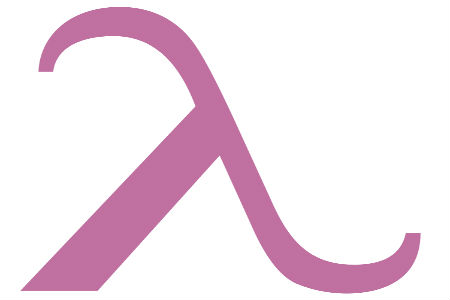Greek Alphabet
Greek Letters
Ever wondered what those letters are that you sometimes see on jackets, houses or other items? Sometimes they look like the letters you can read, and sometimes they are much different. You are probably looking at the Greek Letters, and they are used in many different ways and for many different purposes. There are lots of things that Greek Letters might be used for, but the most common use is for fraternities and sororities. There are many different groups that are either fraternal organizations, or other groups like them, which use Greek Letters in order to distinguish themselves from other such groups. There have been groups like schools and other types of fraternities that have been using Greek Letters for many years and the use of these letters began with the very first fraternity, Phi Beta Kappa.
The Greek letters (Greek Alphabet) have been used to write the Greek language since the late 10th century BC or early 9th century BC. It was derived from the earlier Phoenician alphabet, and was the first alphabetic script to have distinct letters for vowels as well as consonants. It is the ancestor of the Latin and Cyrillic scripts. The Greek Alphabet may have also been the basis for the Armenian alphabet. In fact, the majority of languages that utilize vowels are derived from Greek. The Greek alphabet today also serves as a source of technical symbols and labels in many domains of mathematics, science and other fields.
Today, the Greek Alphabet is used for writing the Modern Greek language and is also used in mathematics and science. The letters are of the Greek Alphabet are used as symbols, particle names, the names of stars, and even naming tropical storms. The Greek alphabet letters were introduced into math and sciences to supplement the typical Roman letters and are often used as some type of a variable or static constant in math. The use of these letters began as many mathematicians and scientists already knew some Greek or Latin.
The letters are also used in the naming of fraternities and sororities. The Greek symbols are typically used to be displayed on fraternity and sorority houses as well as on clothing. This is perhaps one of the most common uses of the Greek Alphabet that people commonly identify with if they are not in the realm of mathematics and the sciences.
The alphabet of the Greek language has 24 letters:
Α Β Γ Δ Ε Ζ Η Θ Ι Κ Λ Μ Ν Ξ Ο Π Ρ Σ Τ Υ Φ Χ Ψ Ω
α β γ δ ε ζ η ή θ ι κ λ μ ν ξ ο π ρ σ τ υ φ χ ψ ω
History of Greek Alphabet
The first script that has been proven to have been used for the writing of the Greek language is Linear B around the 15th century BC. The Greek alphabet has begun to be used since the 9th century BC.
In the 7th century BC all the Greek city-states had already formed and used each of their own alphabets with local specificities.
In 403 BC the so-called Euclidean alphabet was introduced in Athens. The letters F, Ϟ and Α were removed and the letters H and Ω were adopted.
The Aeolian and the Doric alphabet are found in the inscriptions of Thira, Milos, Peloponnesus, Boeotia and Greater Greece, Sicily and Southern Italy. The Attic alphabet (Attica Letters) is found in the inscriptions of Attica before the time of Euclid (402 BC). The Ionic alphabet is found in inscriptions in the Ionian Sea and Asia Minor.
The Greek alphabet became the basis for the creation of the Latin alphabet. Indeed, the Latin alphabet comes mainly from the Etruscan alphabet, which in its turn, and according to the prevailing opinion today, was based on the Greek.
Other uses
The letters of the Greek alphabet are also used in the Greek numbering system. The Greek alphabet is widely used as a symbol pool for use in the sciences either as internationally established symbols (eg π = 3,14) or for any appropriate use.
Like the Latin alphabet, Greek is used for numbering. Particularly in Astronomy, the Greek alphabet is used to number the stars, e.g. the Centaur alpha is the brightest star in the Centaur constellation, while the Omega is the 24th in brightness. After the end of the Greek letters follow the Latin letters followed by the Arabic numbers.
Did you know
The Greek language is not accidental … It was built on mathematics, and what few still know is that every word in Greek has a mathematical background. The letters in the Greek language are not sterile symbols. Upright, upside-down with special emphasis, they were all 1620 symbols used in Harmony (Music in Modern Greek). Their most important attribute is that each letter has a numeric value, each letter is a number, so by extension each word is a number.
The Greek alphabet hides an ancient prayer
An enormous knowledge locked-encoded in words because of the mathematical values they have. One of the Leaders on the subject was the greatest Pythagoras. Numbers, shapes, harmony and stars have something in common, so mathematics (numbers) geometry (shapes) harmony (music) and astronomy (stars) were sister sciences according to Pythagoras, which in the particular order we mentioned was the staircase for the evolution of the mind-soul towards the Creator. In order to be able to understand the meanings of the concepts of the words of the Ancient Greek language, we must first of all know some things about the Greek language itself. The Greek language is a mathematical masterpiece that we will try to approach.
Each letter corresponded to a number, but also to a musical tone, hence letter = number = tone (musician), which indicates that in the Greek language behind the letters-words there are numbers (literals) and musical tones.
The 4 sister sciences according to Pythagoras were:
- Numbers (mathematics)
- Shapes (Geometry)
- Music (Harmony)
- Astronomy
However, what really proves to be inconceivable is the fact that the Greek alphabet hides a secret invocation! If we take his letters and put them in line, an ancient prayer that glorifies the Light and the Soul is displayed by magic! So we have:
“Αλ φα, βη τα Γα! Αμα δε Ελ, τα εψ ιλών. Στη ίγμα, (ίνα) ζη τα, η τα, θη τα Ιώτα κατά παλλάν Δα. (Ινα) μη νυξ η, ο μικρόν (εστί) πυρός δε ίγμα ταφή εψ ιλών, φυ (οι) Ψυχή, ο μέγα (εστί)!”
The translation is as follows:
“Do not you sunlight, you are the light, come to Earth, and you, sun come, cast your rays on the baking clay.” Let it become a sediment to enable the ego to live, to exist and stand on the pulsating earth Let not the night prevail, being the little one, and risk losing the fire in the effervescent mud, and develop the Soul, which is the greatest, the most important of all! “



